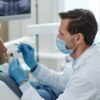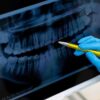The Promise of Bioactive Glass in Dentistry: A New Era of Regenerative Materials
Bioactive glass has emerged as a revolutionary material in the field of dentistry, offering unprecedented potential for tissue regeneration and repair. This innovative class of biomaterials is changing the landscape of restorative and regenerative dental procedures, providing dentists with powerful tools to enhance patient outcomes.
At its core, bioactive glass is a synthetic, biocompatible material composed primarily of silicon, sodium, calcium, and phosphorus oxides. What sets bioactive glass apart is its unique ability to form a strong bond with both hard and soft tissues. When exposed to physiological fluids, bioactive glass undergoes a series of surface reactions, leading to the formation of a hydroxyapatite layer – the principal mineral component of tooth enamel and bone.
The applications of bioactive glass in dentistry are diverse and expanding. In restorative dentistry, it’s being incorporated into dental composites and cement to enhance their bioactive properties. These materials not only fill cavities but actively promote remineralization of the surrounding tooth structure, potentially reversing early stages of decay.
In periodontics, bioactive glass particles are used as bone grafting materials. Their osteostimulative properties encourage new bone formation, making them invaluable in treating periodontal defects and preparing sites for dental implants. The material’s ability to stimulate angiogenesis – the formation of new blood vessels – further supports tissue regeneration and healing.
Research into bioactive glass is also exploring its potential in treating dentin hypersensitivity. When applied to exposed dentin, bioactive glass particles can occlude dentinal tubules and form a protective layer, providing relief from sensitivity. Unlike traditional desensitizing agents, this approach offers a more durable and potentially regenerative solution.
The antibacterial properties of certain bioactive glass compositions add another dimension to their utility in dentistry. By incorporating elements like silver or zinc, these materials can inhibit bacterial growth, potentially reducing the risk of secondary caries and post-operative infections.
Despite its numerous advantages, the integration of bioactive glass into mainstream dental practice faces some challenges. The material’s mechanical properties, particularly in load-bearing applications, need further improvement. Additionally, long-term clinical studies are necessary to fully understand the longevity and efficacy of bioactive glass-based treatments in various dental applications.
Looking ahead, the future of bioactive glass in dentistry is bright. Researchers are exploring advanced compositions and manufacturing techniques to enhance its properties and expand its applications. The development of bioactive glass scaffolds for tissue engineering holds particular promise for complex oral rehabilitation cases.
For dental professionals, staying informed about bioactive glass technology is crucial. As these materials continue to evolve and enter clinical practice, they offer new possibilities for minimally invasive, regenerative approaches to dental care. Understanding the science behind bioactive glass and its clinical applications will be key to leveraging its full potential in patient treatment.
The integration of bioactive glass into dental materials represents a significant shift towards regenerative dentistry. As research progresses and clinical evidence accumulates, bioactive glass may well become a cornerstone of modern dental practice, offering solutions that not only restore but actively regenerate oral tissues.
This evolving field underscores the importance of continued education and adaptability in dental practice. As bioactive glass and other advanced materials become more prevalent, dentists who embrace these technologies will be well-positioned to offer cutting-edge, biologically-driven treatments to their patients.











